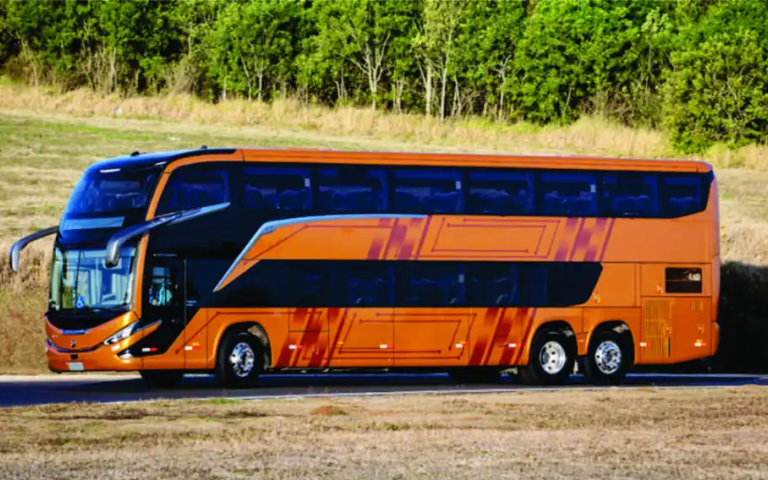The engine and the box of this new bus (Volvo's most daring bet for the Latin American market with a view to the transformation towards the Euro 6 standard), are used for the first time in passenger vehicles, these being the same ones that equip the established Volvo FH, the best-selling truck in the Brazilian market among all categories.
“The greater similarity with the brand's truck line contributes to the introduction of new technologies, while at the same time speeding up the supply of after-sales components to the customer,” observes Paulo Arabian, commercial director of Volvo buses in Brazil.

Less emissions, more technology
The new engine has a capacity of 13 liters, with reduced emissions, in compliance with Proconve P8/Euro 6 standards, which will be in force from 2023. It has Common Rail technology, which achieves higher fuel injection pressure, making more efficient combustion.
The car also features Volvo's well-known Smart Acceleration technology, which provides exactly the right amount of torque for the best performance with maximum economy. Another improvement is the electronic water pump and an air compressor that disengages when not working, giving an even better result. In addition, the radiator and intercooler fans are electric and only turn on, when necessary, reducing mechanical and hydraulic losses, increasing efficiency.
The transmission of the new chassis is the renowned I-Shift, which in its 7th generation allows even faster and smoother gear changes, “This set of innovations makes the new Volvo Euro 6 heavy-duty chassis up to 9% more economical than its predecessors, depending on topography and route. In other words: we managed to reconcile low emissions with high economy, for the benefit of our customers and also of the entire planet”, says Paulo Arabian.

Less maintenance
Many improvements have been made to the new chassis. This is the case of the separation, for the first time, between the water radiator and the intercooler, a change that guaranteed lower thermal losses. The creative design carried out by Volvo engineering allowed the engine compartment to maintain more stable temperatures, making the oil have a longer useful life, providing a fluid change interval of more than 100 thousand kilometers, 30% more than in the previous generation.
Digital instrument panel
Innovations also reached the driver's workplace, with a new fully digital instrument panel, just like on Volvo FH trucks, with more than 90 functions. The driver can customize three instrument display modes, depending on the information they want to prioritize.
The leather steering wheel is new, and the driver can now control the cruise control and on-board computer without having to move his hands, and can even answer the phone via Bluetooth without taking his eyes off the road.
The new chassis also feature electronic alternators. Connected together, they have a longer lifespan and better battery charging efficiency. Another change occurred in the electronic architecture, called Multiplex 3. It is completely new, guaranteeing higher data rates and even greater efficiency in the chassis body.

More security
The new buses have even more safety, a core value of Volvo. The VEB engine brake (Volvo Engine Brake) now has 510 hp, 30% more than the previous version, and is still the most powerful on the market.
Volvo's time-honoured technologies, such as the Active Safety System (SSA), Electronic Stability Program (ESP) and disc brakes with the 5th generation EBS electronic control system, continue to be present in the new line-up. In this generation of chassis, SSA is also enabled for bodies with a split windshield. In addition, all recent safety advances are present, such as the "Forward Collision Warning with Emergency Braking", the "Lane Change Warning", the "Windshield Warning Signal", the "Adaptive Cruise Control" and the “Vibrating seat”. In addition, Volvo offers the Safety Zones system as a safety option d. This technology, exclusive to the brand, uses GPS data to automatically reduce speed in critical areas such as descents, dangerous curves or bus terminals.
Dynamic steering
Another optional novelty in the new chassis is Volvo Dynamic Steering, an extremely advanced steering system created by the brand, which controls driving with high precision, smoother steering and provides greater stability to the vehicle.
The new generation of Volvo Euro 6 heavy-duty road chassis will begin delivery from 2023. There will be 4×2, 6×2 and 8×2 versions, in the B380R, B420R, B460R and B510R models. In the 4×2 version, the load capacity is 19.5 tons. As for the 6×2, it is 24.75 tons. In the 8×2 version, the capacity reaches 29.25 tons.

